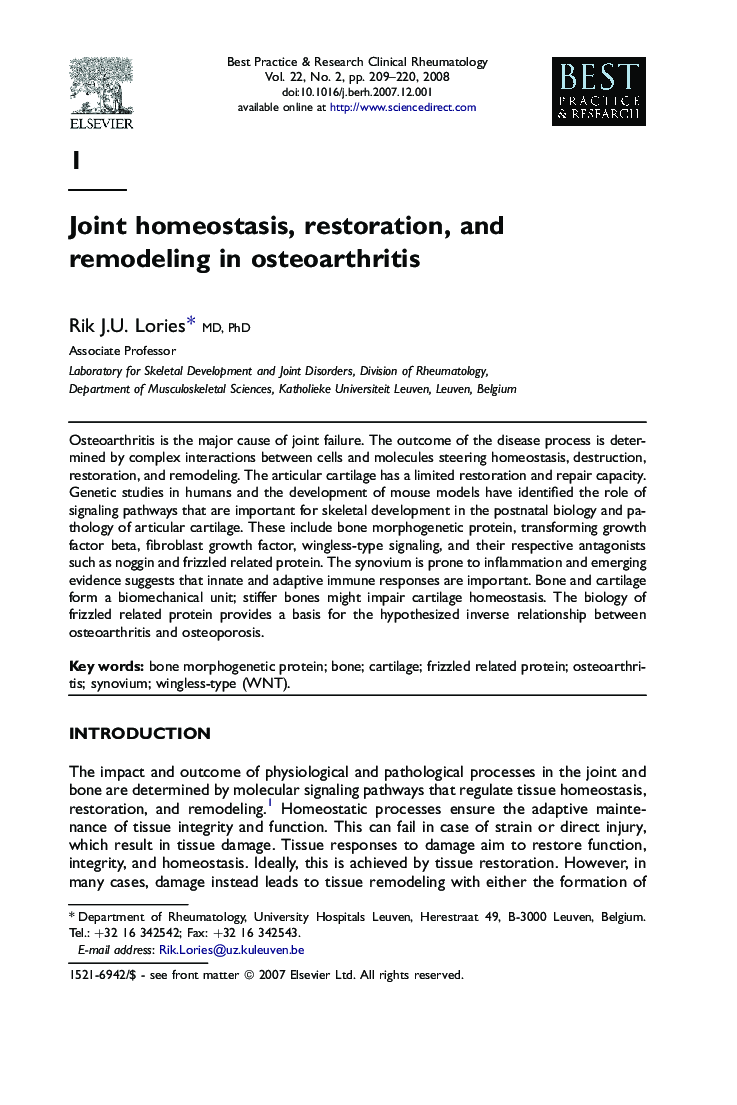| Article ID | Journal | Published Year | Pages | File Type |
|---|---|---|---|---|
| 3343330 | Best Practice & Research Clinical Rheumatology | 2008 | 12 Pages |
Osteoarthritis is the major cause of joint failure. The outcome of the disease process is determined by complex interactions between cells and molecules steering homeostasis, destruction, restoration, and remodeling. The articular cartilage has a limited restoration and repair capacity. Genetic studies in humans and the development of mouse models have identified the role of signaling pathways that are important for skeletal development in the postnatal biology and pathology of articular cartilage. These include bone morphogenetic protein, transforming growth factor beta, fibroblast growth factor, wingless-type signaling, and their respective antagonists such as noggin and frizzled related protein. The synovium is prone to inflammation and emerging evidence suggests that innate and adaptive immune responses are important. Bone and cartilage form a biomechanical unit; stiffer bones might impair cartilage homeostasis. The biology of frizzled related protein provides a basis for the hypothesized inverse relationship between osteoarthritis and osteoporosis.
